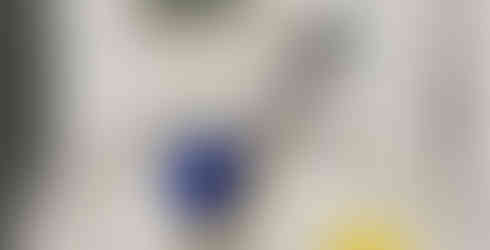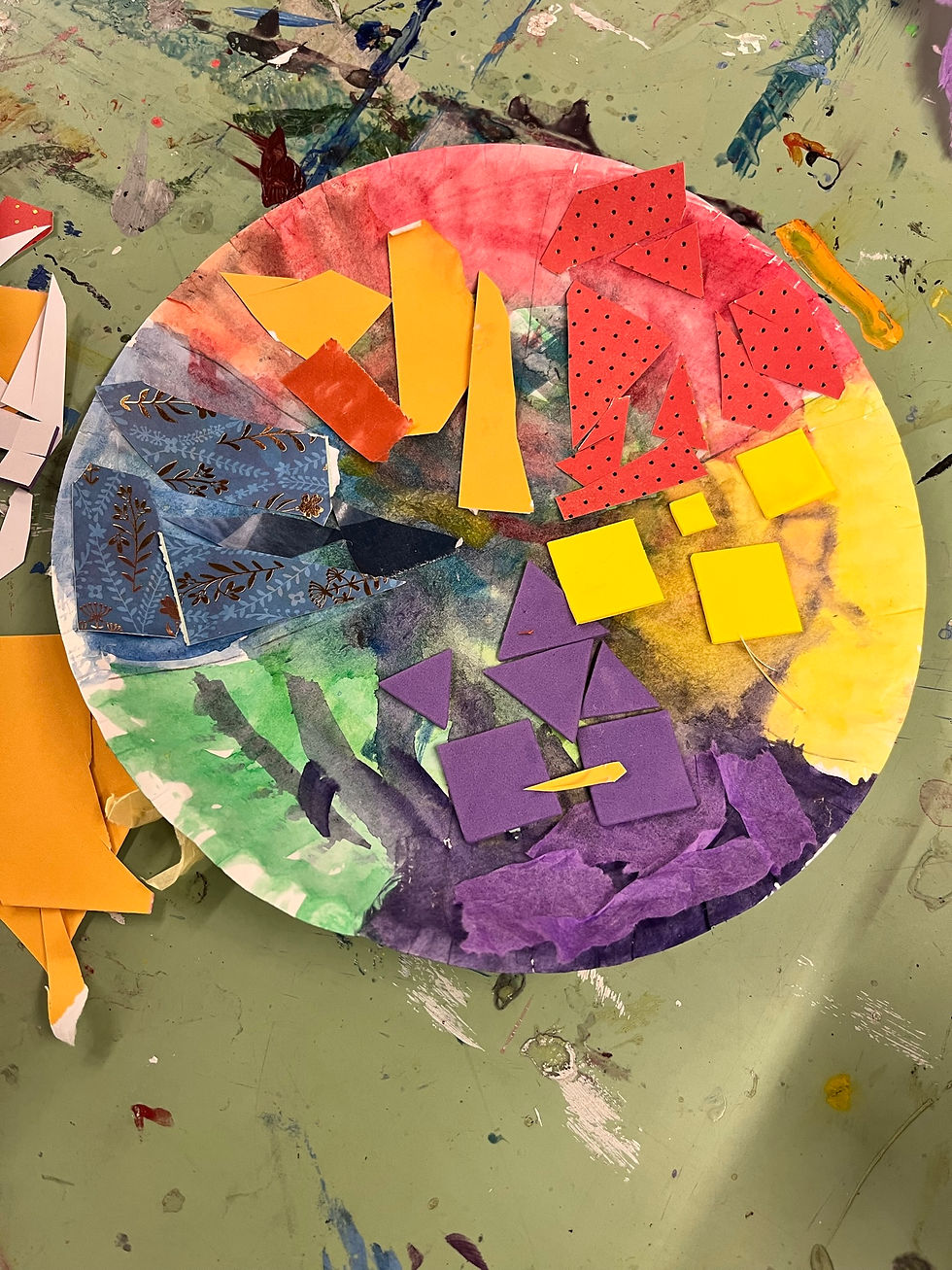Lesson 3: Pottery Painting
- Madison Kelley
- Nov 14, 2022
- 3 min read
Updated: Nov 17, 2022
Art Experience:
The third lesson focused mainly on being a transition between the 2D and 3D focused materials and mediums. We returned to our coil pots and texture tiles to paint them in acrylic, which will be followed up next week by shifting entirely into watercolor painting.
Essential Understanding:
Students will consider and learn how to paint on their clay creations from the previous two weeks. They will learn how to use acrylic paint effectively.
Objectives/outcomes:
· Paint on 2D and 3D surfaces
· Learn how to use acrylic paint
· Consider their use of color
Skills:
· Handling paintbrushes
· Using acrylic paint
· Painting a surface completely
· Painting on clay
Reflection:
What worked well? Why?
We pretty immediately saw that introducing painting was going to be fun and interesting for students. Everyone engaged on a different level and in a different way, but everyone was engaged throughout all of class.
For example, one student, who had significantly less mobility than others, was able to handle a long paintbrush easily and enjoyed painting the tiles and the cardboard. They ended up spending most of the class on the cardboard piece, but we were all happy to see them enjoying themselves and being able to take control of what they worked on. Other students enjoyed being able to return to their pottery and add new touches, or to try paint in general.
Overall, everyone was able to use the materials easily and enjoyed doing so. The variety of options to paint on gave everyone a chance to work and do something they liked. Everyone learned how to use paint on new surfaces, and work with the paint and water cups. All the materials and the simplicity of the class made it accessible for everyone.
What didn’t work well? Why?
Generally, the planned class structure failed after we let students start painting. There wasn’t a way to get everyone’s attention again after the tiles and paint were out, and so there was no way to transition painting the pots as a whole class. This didn’t cause any class-wide issues, but it did require rethinking how to keep the class moving, and to consider for the next couple of lessons. The transition was hard to manage because most students were giving their full attention to painting their tiles, and it was easy to tell they wouldn’t have wanted to swap in the middle of painting all of them. Also, using multiple projects to give time to dry between tiles and pots overall didn’t work as well as originally planned. Students wanted to finish one part of the project entirely before moving onto another. Again, not a development that ruined class, but it was a little unexpected and was kept in mind for later.
What would you do differently?
Mainly, finding a way to give students the option of which project to work on after finishing painting their cardboard piece. I think it would have been totally manageable to let students paint on either the tiles or the pots, letting them work on what they were most interested in for most of the class period. Starting with the tiles, in hindsight, doesn’t seem as informative or helpful as planned- many students were familiar enough with acrylic to start paint on any surface.
I would also have some separate cardboard pieces already painted as a backup, for two main reasons. One, there was a new student who had missed the first two weeks, and therefore did not have anything of their own to work on. One student had extra tiles they were willing to share, and we had an extra sample pot we were able to give them, but students needing to share their work didn’t feel ideal to me. Having some pre-made cardboard ready, just in case, would have helped solve that problem and give the new student something to work on the whole time that was entirely their own. Also, drying time on the cardboard was longer than planned, and seems like a good idea to have some ready for students who want to paint the cardboard earlier one, while they wait for the other one to dry, or for students who struggled with painting the cardboard and needed one provided.
Documentation:
*Click to expand images





















Comments